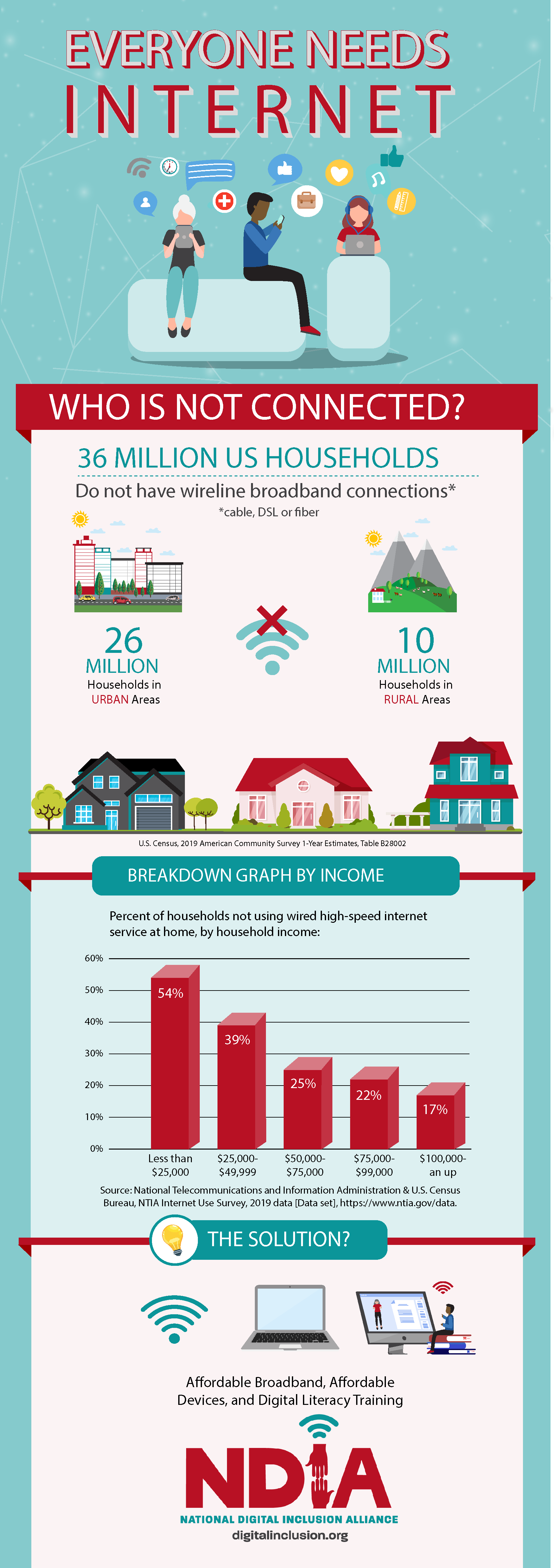Digital Inclusion
The goal of Tech Goes Home Tennessee is to reduce the digital divide in Tennessee through trainings, technical assistance, targeted technical assistance, coaching, and help desk assistance to child care educators and child care agencies. TGH TN follows the definitions of digital inclusion, digital equity, and digital literacy from National Digital Inclusion Alliance (NDIA).
Digital Divide
The digital divide is the gap between those who have affordable access, skills, and support to effectively engage online and those who do not. As technology constantly evolves, the digital divide prevents equal participation and opportunity in all parts of life, disproportionately affecting people of color, Indigenous peoples, households with low incomes, people with disabilities, people in rural areas, and older adults. (National Digital Inclusion Alliance)
Digital Inclusion
Digital Inclusion refers to the activities necessary to ensure that all individuals and communities, including the most disadvantaged, have access to and use of Information and Communication Technologies (ICTs). This includes 5 elements: 1) affordable, robust broadband internet service; 2) internet-enabled devices that meet the needs of the user; 3) access to digital literacy training; 4) quality technical support; and 5) applications and online content designed to enable and encourage self-sufficiency, participation and collaboration. Digital Inclusion must evolve as technology advances. Digital Inclusion requires intentional strategies and investments to reduce and eliminate historical, institutional and structural barriers to access and use technology. (National Digital Inclusion Alliance)
Digital Equity
Digital Equity is a condition in which all individuals and communities have the information technology capacity needed for full participation in our society, democracy and economy. Digital Equity is necessary for civic and cultural participation, employment, lifelong learning, and access to essential services. (National Digital Inclusion Alliance)
Digital Literacy
Digital Literacy is the ability to use information and communication technologies to find, evaluate, create, and communicate information, requiring both cognitive and technical skills. (American Library Association’s definition of Digital Literacy)
NDIA defines that a digitally literate person:
- Possesses the variety of skills – technical and cognitive – required to find, understand, evaluate, create, and communicate digital information in a wide variety of formats
- Is able to use diverse technologies appropriately and effectively to retrieve information, interpret results, and judge the quality of that information
- Understands the relationship between technology, life-long learning, personal privacy, and stewardship of information
- Uses these skills and the appropriate technology to communicate and collaborate with peers, colleagues, family, and on occasion, the general public
- Uses these skills to actively participate in civic society and contribute to a vibrant, informed, and engaged community
For information and resources regarding the digital divide, digital inclusion, and more, visit www.digitalinclusion.org.



